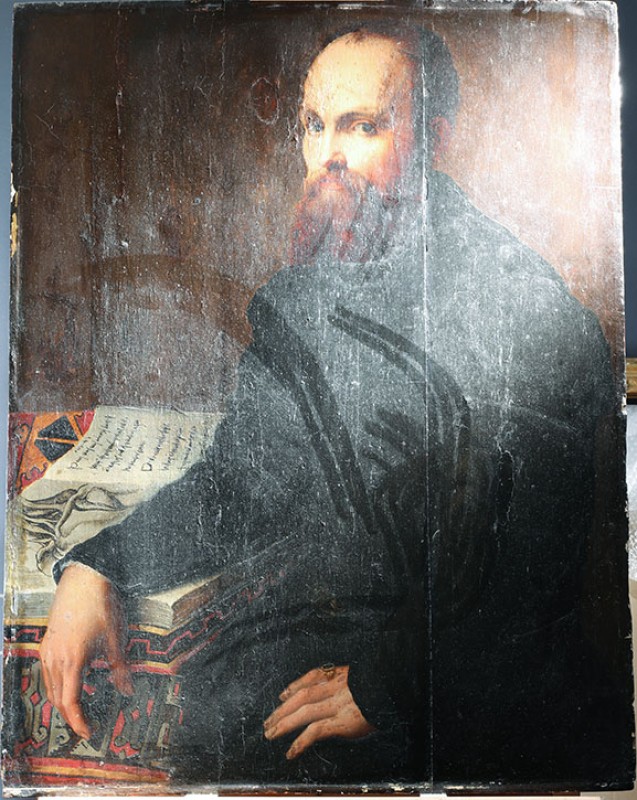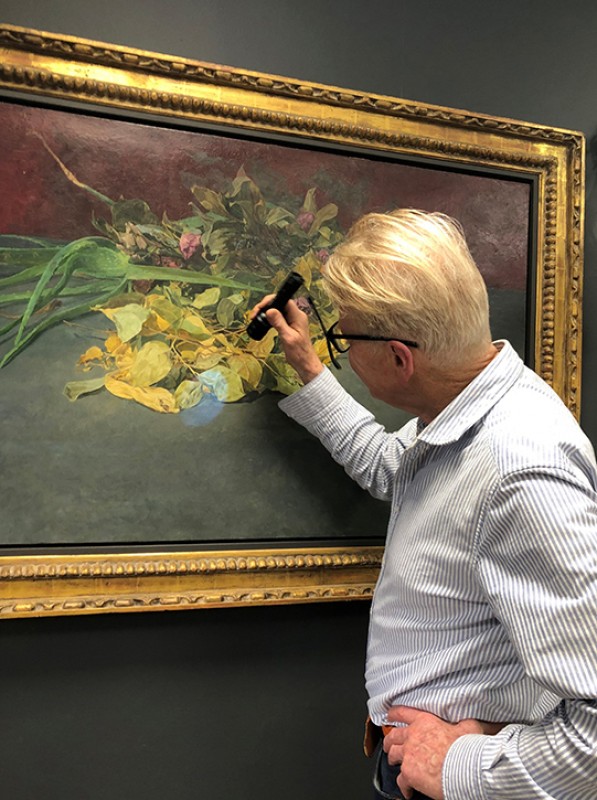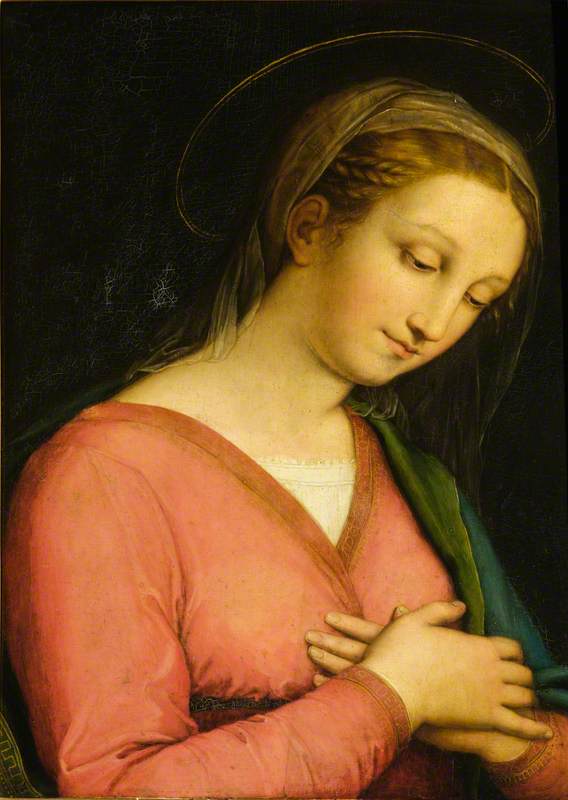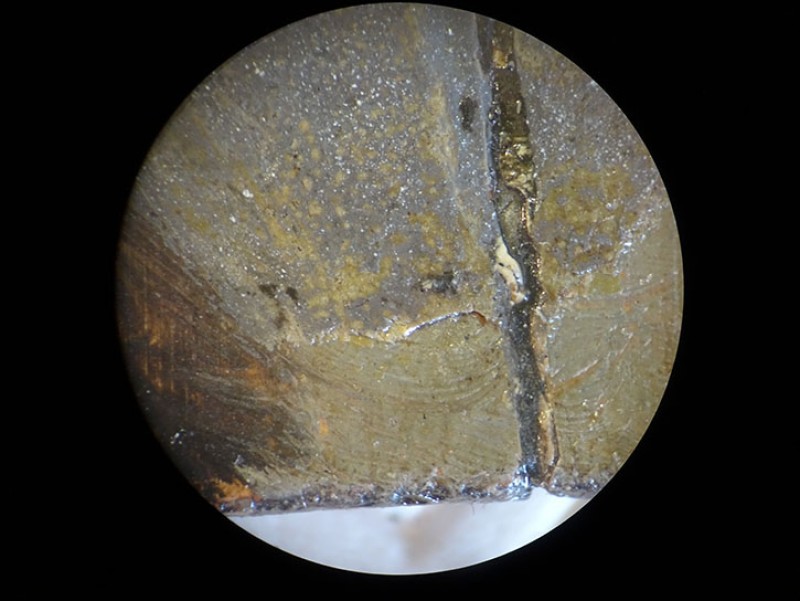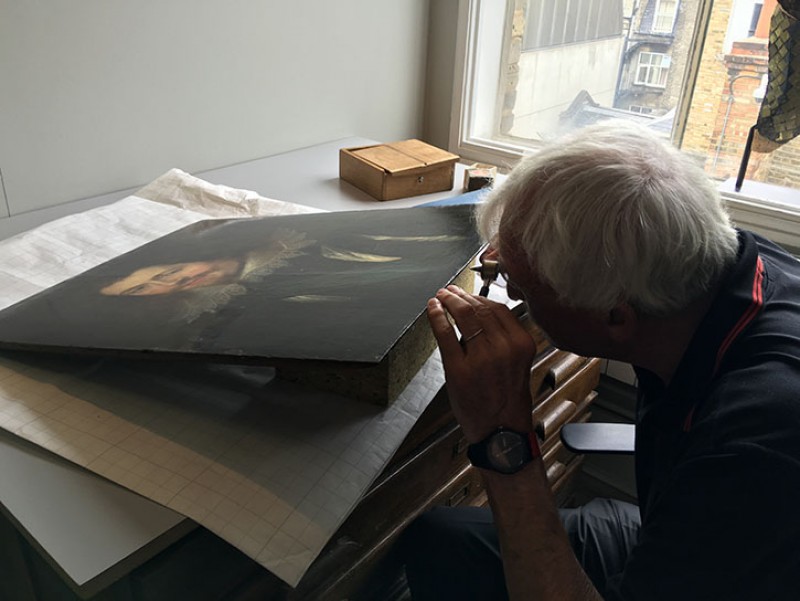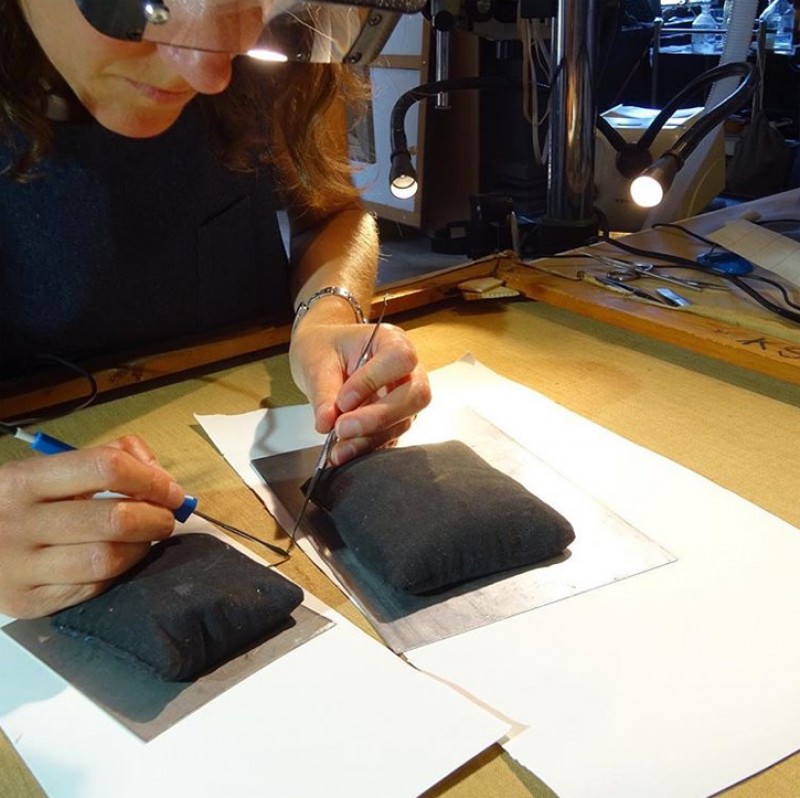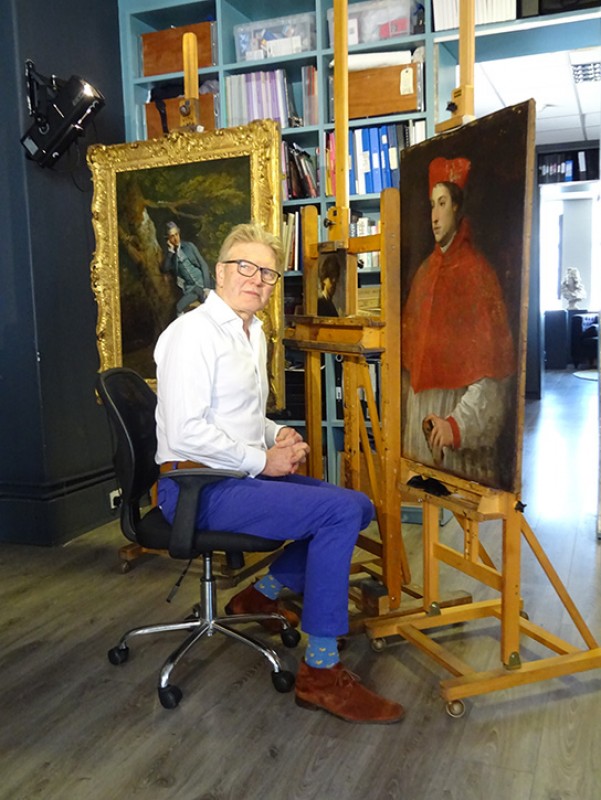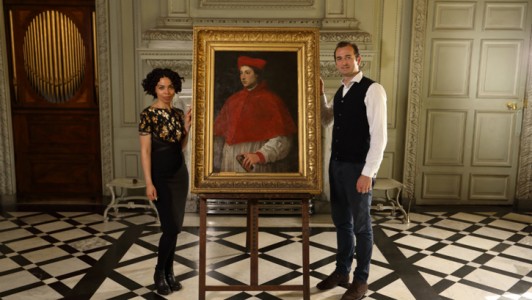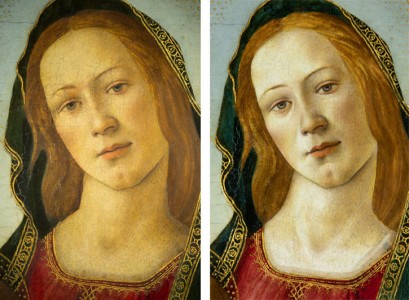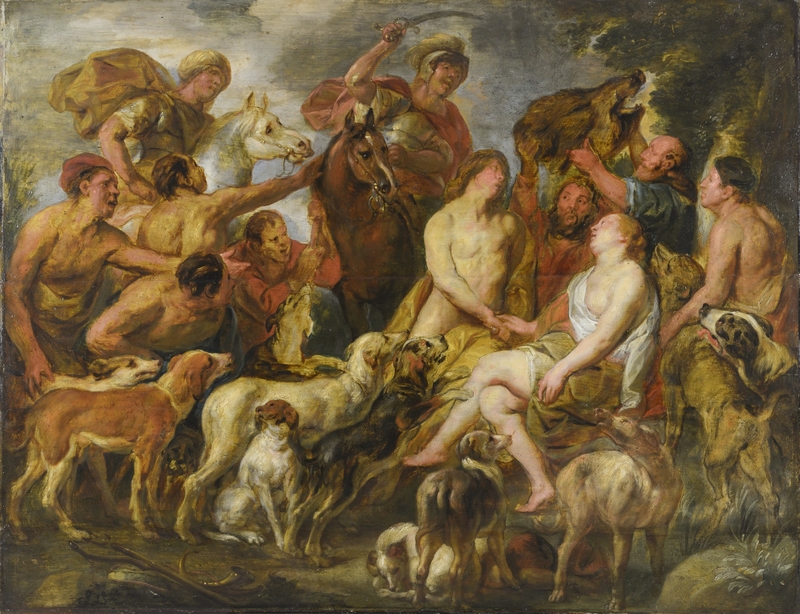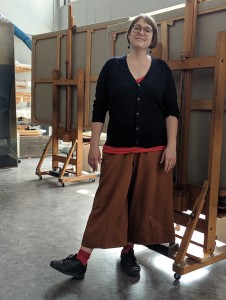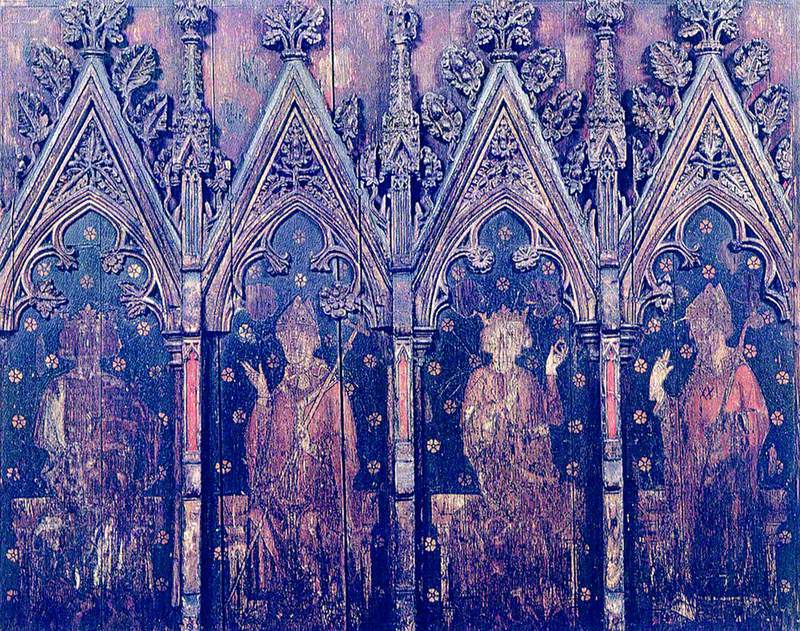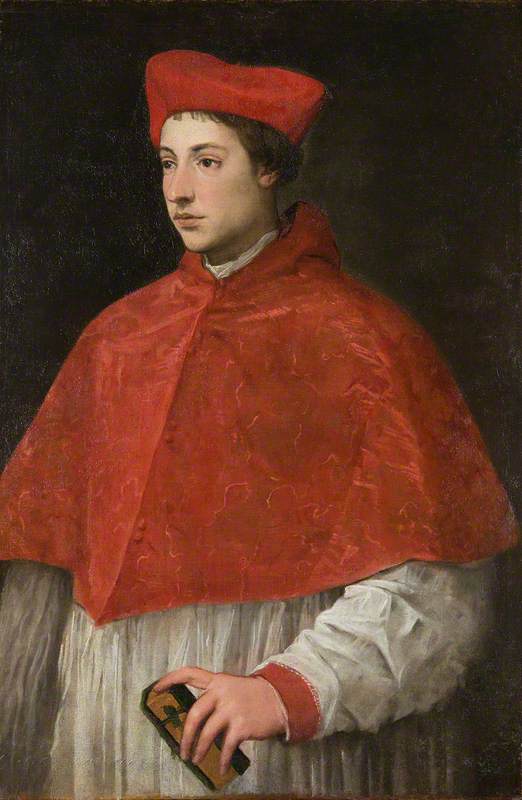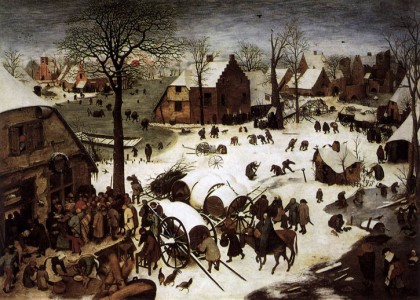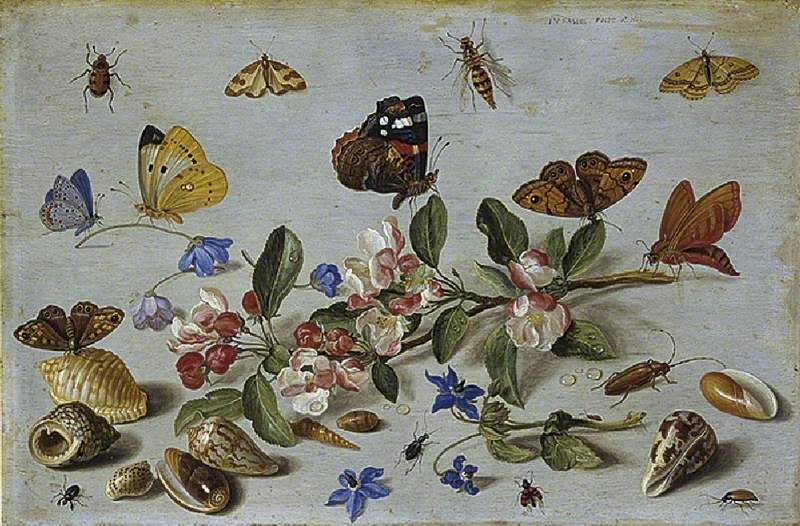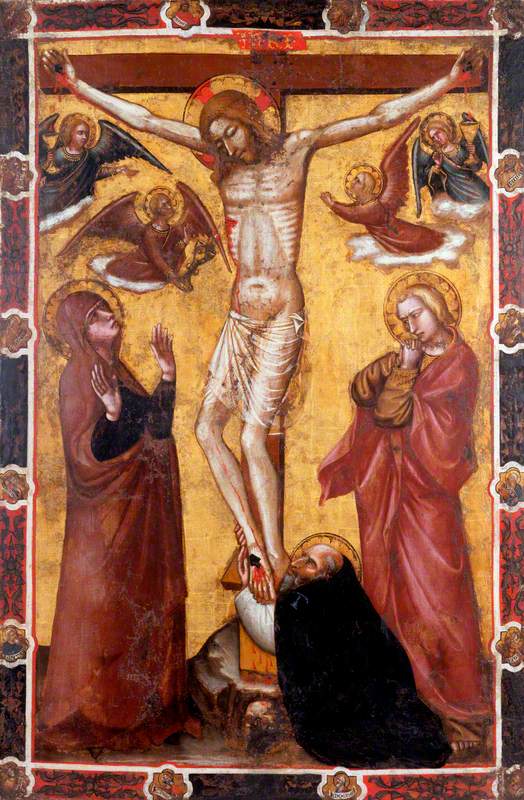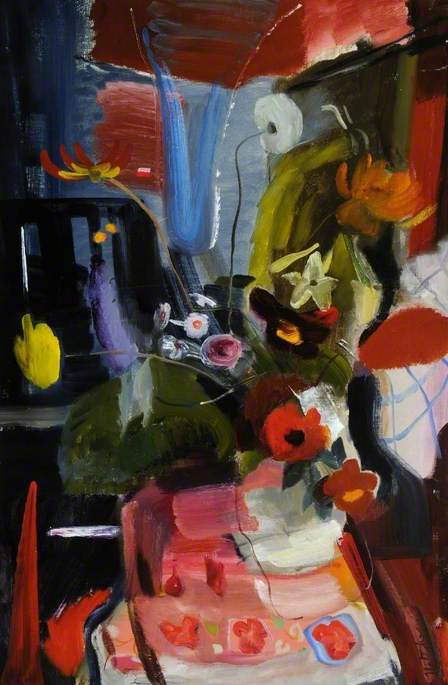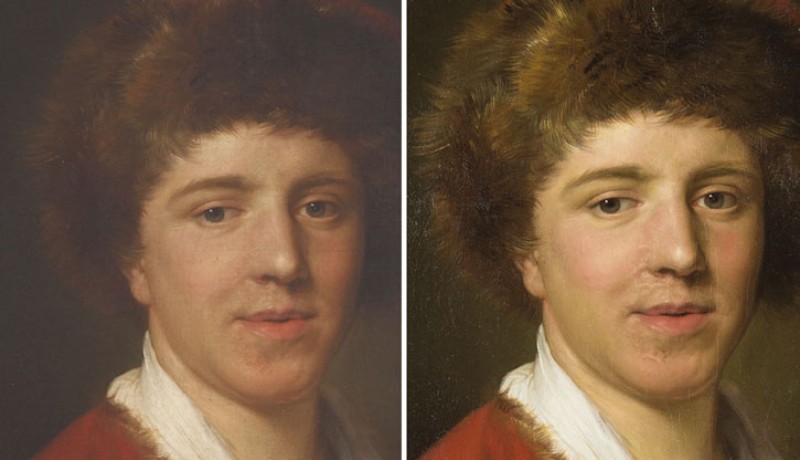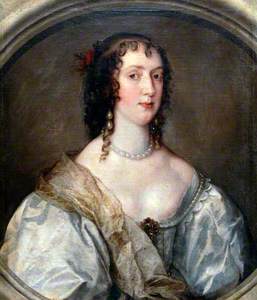In this series, 'Conservation in focus', Simon Gillespie, Director of Simon Gillespie Studio, explores the art of conservation. In each article, Simon looks in depth at a particular technique or tool that is crucial to conservators and explores the challenges – and triumphs – associated with their everyday work.
After dirt, varnishes, and overpaint have been removed and the original layer of paint has been exposed, it is time once again to pause and reflect on what the picture now looks like.
What damages have been revealed that were previously concealed by overpaint? Has the paint been abraded by past harsh cleaning methods? Are there lines of loss – where the painting rested in a frame which rubbed the paint off around the edges, or where a loose canvas has rested against a stretcher bar, pushing the paint off the front?
Retouching in process on 'La bocca della verità'
These areas of losses will need to be filled with a filling material, such as gesso, to bring the loss level with the top paint layer so that there is no visible 'step' between the restoration and the original paint. Then, the filing material will need to be textured so that it has the same texture as the original areas – for example, a particular canvas weave – as was considered during the restoration of a tear to Allan Ramsay's portrait of Dr Mead.
A detail of Ramsay's portrait of Dr Mead, showing the retouching process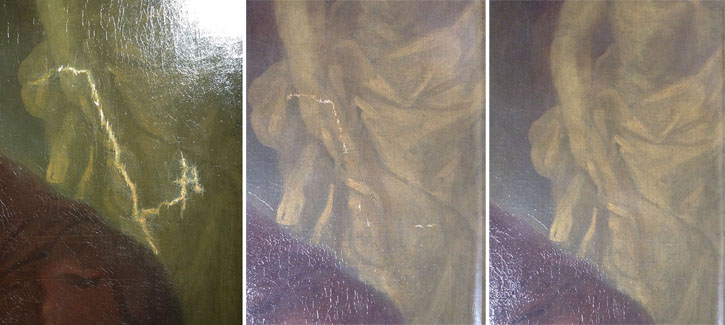
Finally, colour will be added in the form of pigment suspended in a varnish medium. Conservators do not use oil paint for retouching because the retouching needs to be reversible and easy to be removed in future should this be desired. This varnish medium must only be added in areas of loss, not covering areas of original paint.
A detail of Wright's painting of Ponte Nomentano, before and after treatment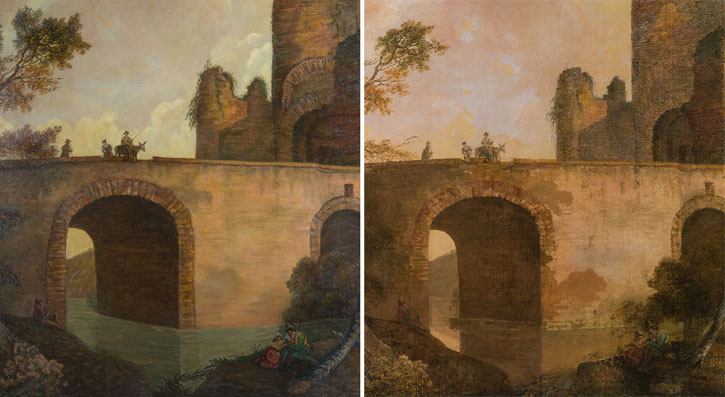
In the painting A View of the Ponte Nomentano, near Rome from Derby Museum and Art Gallery, overpaint had been applied to conceal abrasions to the original paint. This resulted in areas of thinned paint, but it has been applied much too liberally and with little skill: the water of the river was made to look like it was flowing in two different directions, a gorgeous reflection of the bridge's arch in the water was no longer visible, some of the artist's characteristic sgraffito lines were concealed by the addition of a bush in the lower right, and the costumes of the various figures had been changed.
After removing the overpaint, small dots of retouching were applied in the abraded areas, to fill the losses and create a coherent image without painting over any original paint.
Similarly in the portrait of Olivier Boteler Porter by Anthony van Dyck (at The Bowes Museum), there was much paint loss around the edge of the picture. This suggested that, in the past, the painting had become stuck to the inside of a frame and damaged during its removal. Due to the poor tension of the canvas, there were pronounced stretcher bar marks, and past attempts at cleaning had thinned down the original paint layer in various parts of the painting. The losses were filled, textured and precisely retouched. Further retouching was carried out in the abraded areas.
After treatment, the original quality of the painting could be seen unobstructed and areas of damage had been sympathetically brought into a coherent whole. When the painting was shown to Christopher Brown, an expert on Van Dyck, he said the picture was not a later copy as had been previously thought: instead, he said, 'This absolutely is Van Dyck at his best. It is a substantial discovery.'
Simon Gillespie, Director at Simon Gillespie Studio
Previous: Overpaint: the audacity of past restorers!
Next: Art conservation: the final touches



